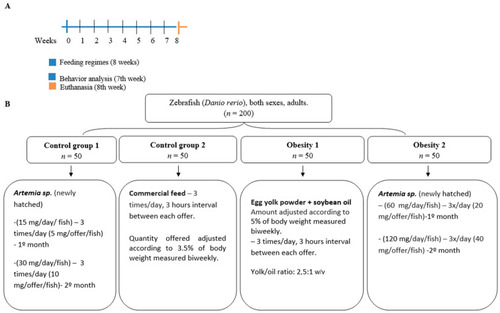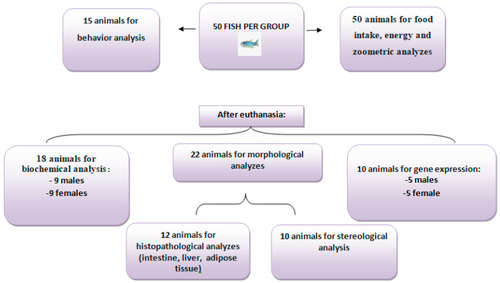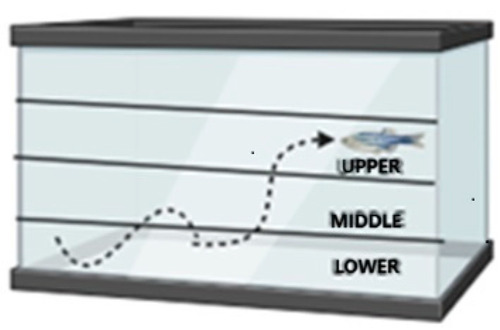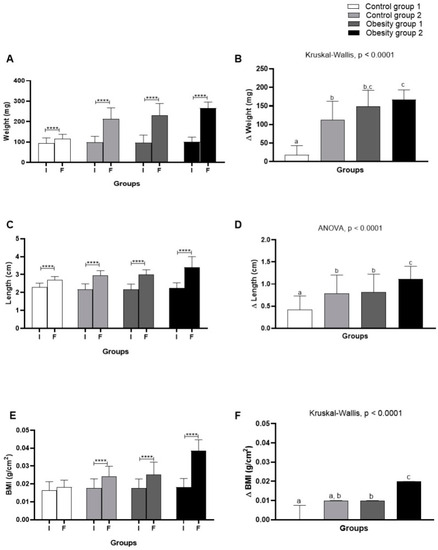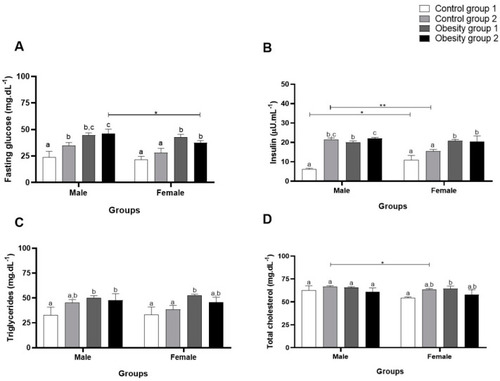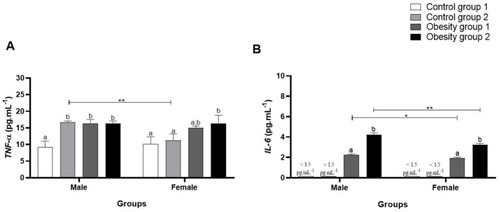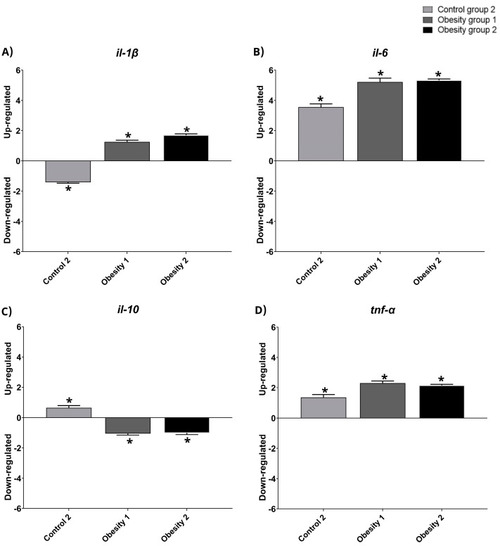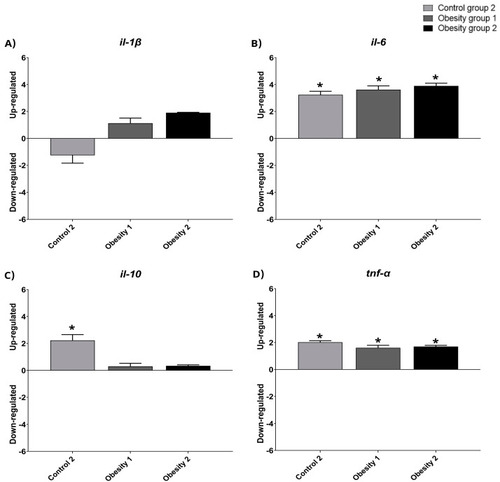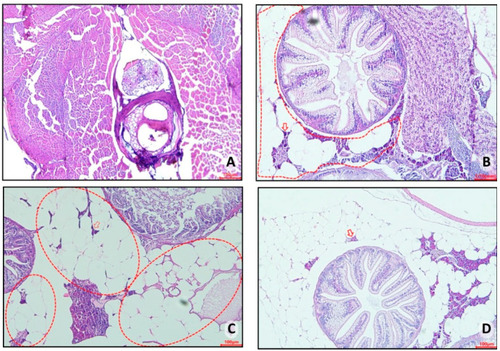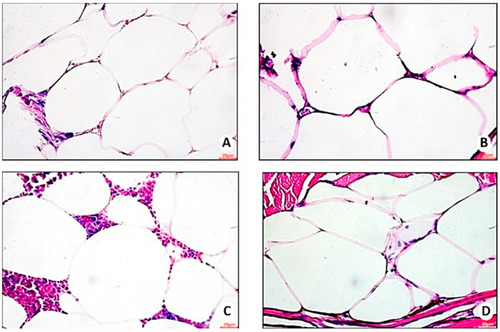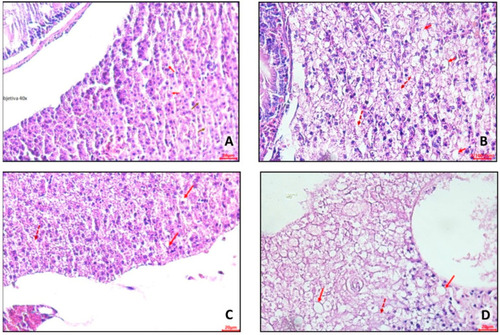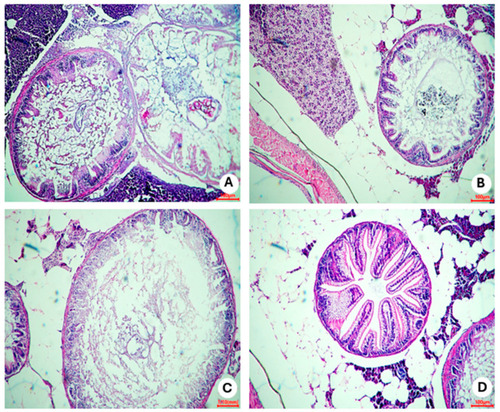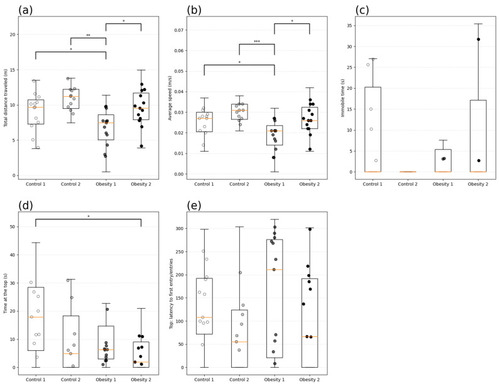- Title
-
Evaluation of the Effects of Diet-Induced Obesity in Zebrafish (Danio rerio): A Comparative Study
- Authors
- Silva, M.G.F.R., Luchiari, A.C., Medeiros, I., de Souza, A.M., Serquiz, A.C., Martins, F.F., Moura, S.A.B., Camillo, C.S., Medeiros, S.R.B., Pais, T.D.S., Passos, T.S., Galeno, D.M.L., Morais, A.H.A.
- Source
- Full text @ Nutrients
|
Design of the eight-week diet-induced obesity experiment. ( |
|
Distribution of the number of animals according to the type of analysis. All 50 animals per group were analyzed for food intake, energy intake, and zoometric analyses, and 15 were used for behavioral analysis. After euthanasia, 18 animals were used for biochemical analyses (nine males and nine females), 22 for morphological studies, and 10 for gene expression (five males and five females). |
|
Schematic representation demonstrating the tank divisions. New tank experiment. The tank was divided into three horizontal areas of the same proportion (lower, middle, and upper). |
|
Comparison of initial (I) and final (F) assessment and variation (Δ) of body weight, length, and body mass index (BMI) of adult zebrafish (three months) with diet-induced obesity (DIO) for eight weeks. ( |
|
Visual comparison of zebrafish with DIO. ( |
|
Concentrations of biochemical parameters of adult male and female zebrafish (three months) with diet-induced obesity (DIO) for eight weeks. Values are expressed as mean (standard deviation). |
|
Plasma concentrations of inflammatory parameters of adults male and female zebrafish (three months) with diet-induced obesity (DIO) for eight weeks. Values are expressed as mean (standard deviation), n = 9 adult animals per group and sex. Letters a and b represent statistical differences in the comparison between groups. Equal letters indicate no significant difference between the groups evaluated for each parameter (Asterisks: * |
|
Relative gene expression values of inflammatory markers in visceral adipose tissue in adult male zebrafish (three months) with diet-induced obesity (DIO) for eight weeks. Qualitative data and normalization with control group 1. Control group 2: fed with commercial food (3.5% of the group’s average weight); obesity group 1: overfed with powdered egg yolk mixed with soybean oil (2.5:1 |
|
Relative gene expression values of inflammatory markers in visceral adipose tissue in adult female zebrafish (three months) with diet-induced obesity (DIO) for eight weeks. Qualitative data and normalization with control group 1. Control group 2: fed with commercial food (3.5% of the group’s average weight); obesity group 1: overfed with powdered egg yolk mixed with soybean oil (2.5:1 |
|
Representative photomicrograph, at 10× using a 100 µm objective, of visceral adipose tissue from adult zebrafish (three months) with diet-induced obesity (DIO) for eight weeks. In control group 2, an accumulation of unilocular adipocytes was observed involving organs located in the abdominal cavity (dashed circle) with the presence of macrophages (red arrow) ( |
|
Representative photomicrograph, at 40× using a 20 µm objective, of hypertrophied adipocytes in visceral adipose tissue of zebrafish with diet-induced obesity (DIO) for eight weeks ( |
|
Volume density ( |
|
Representative photomicrographs, at 40× using a 20 µm ( |
|
Representative photomicrographs, at 10× using a 100 µm objective, of areas of the intestine of zebrafish adults (three months) with diet-induced obesity (DIO) for eight weeks. ( |
|
Behavioral analysis of anxiety by the new tank test of adult male and female zebrafish (three months) with diet-induced obesity (DIO) for eight weeks. Data are expressed as medians (interquartile distance) analyzed using the Kruskal–Wallis test. Each circle represents an individual animal (n = 15). Control group 1: fed with |

